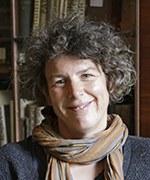Between 2009 and 2013, Spike Bucklow and Lucy Wrapson undertook a project looking into the history, original technique and condition of late medieval rood screens in East Anglia, funded by the Leverhulme Trust.
Spike Bucklow and Lucy Wrapson undertook a project looking into the history, original technique and condition of late medieval rood screens in East Anglia, funded by the Leverhulme Trust between 2009 and 2013. Rood screen is a term used for the partition between the chancel and nave found in medieval churches. The word ‘rood’ refers to the Crucifix that was habitually placed in the chancel arch above the screen. Although there was no standardised format for the structures which previously surrounded the rood, they traditionally incorporated a balcony, termed a rood loft, situated on top of the rood screen. This was accessed by a small staircase or rood stair, cut into the wall of the church. It is quite common to see traces of these doorways in medieval churches, even when the screen and rood loft have vanished.
Almost no roods or fragments of roods survive and there are only a small number of remaining lofts because they were deliberately destroyed during the Reformation and Civil War. However, many of the painted screens which supported these upper structures remain, albeit with the faces of their saints literally defaced.
East Anglia and the West Country have the largest number of surviving painted screens. Figurative rood screens, typical of these regions, represent the largest body of late medieval painting on wood in the United Kingdom.
Although the origins of rood screens are obscure, a large number of 14th and especially 15th—16th century examples survive. In England, most chancel screens are made of oak and were painted, either decoratively or with religious figures. In Norfolk, some of the figure painting, such as at Barton Turf and Ranworth, is of very high quality.
As a rule, where paint survives, rood screens follow a consistent colour scheme. This includes extensive use of striped barber pole decoration, an alternation of red and green, especially on the backgrounds of the dado panels, a fairly sparing use of expensive blue pigments and the application of gilding either as embellishment over cast decorations or stencilled onto the backgrounds of dado panels. The frameworks surrounding panels are often painted white and decorated with flowers.
It is thought that about five hundred rood screens and parclose screens remain in Norfolk, Suffolk and Cambridgeshire, and about two hundred retain much of their colouring, either figure paintings or decorative schemes.
By looking closely at the screens, it is possible to identify the work of the same teams of carpenters and painters. Both wood carvers and painters can be seen to repeat designs and motifs on different screens. In the decorative layers, the use of recognisable moulds and stencils means that the production of specific workshops can be pinned down, even where they are quite geographically distant.

